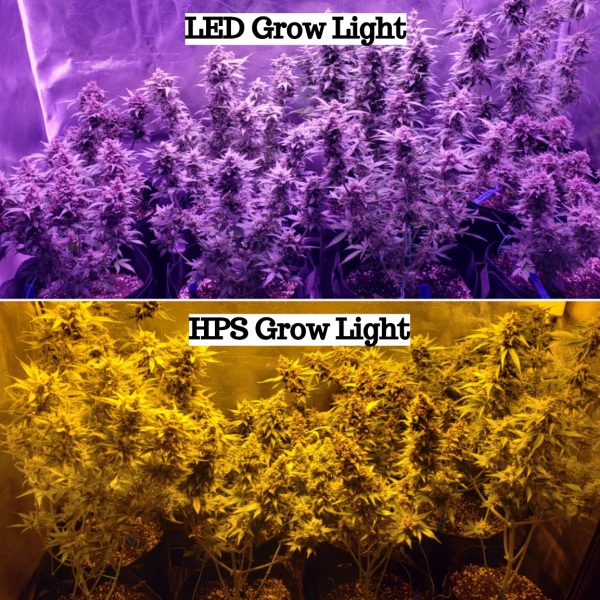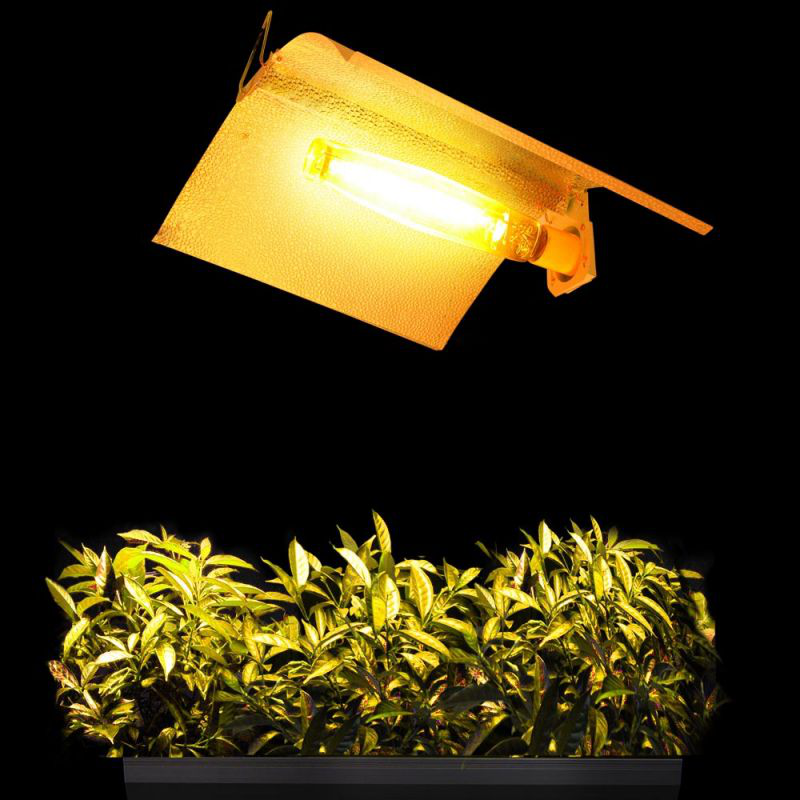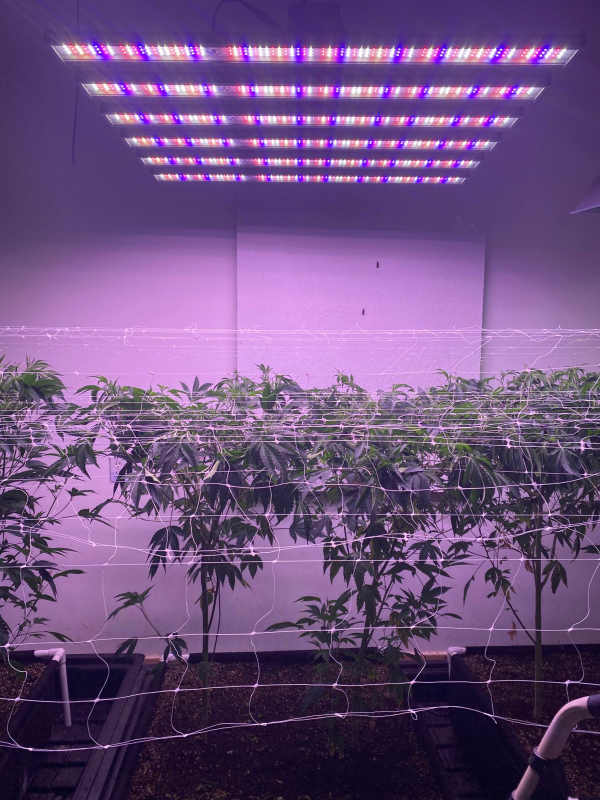![]()

HPS lamps (high pressure sodium lamps) have been a confident leader in the market for lighting systems for cannabis for decades, while other technologies, although they exist, are unlikely to shake their position. In this article, we will take a close look at the differences between the different types of lamps and try to form an opinion on what to expect from them.
So what are HPS, LED (light emitting diodes) ?

HPS lamps emit light by passing a high-voltage pulse of energy through a sealed quartz tube filled with vapors of sodium and some other elements such as xenon and mercury. When heated, the gases begin to glow. Sodium produces an intense orange, yellowish light; the spectrum can be altered using xenon and mercury, which emit in the blue range of the visible spectrum, making the light whiter.

Light-emitting diode (LED) lamps are semiconductors that allow electricity to pass almost unhindered in one direction, but offer very strong resistance in the other - through a "pn junction". On one side of the junction there is material processed in such a way that it received extra electrons, on the other side there is a material in which, on the contrary, there are not enough electrons. By applying voltage, we force electrons to move through the junction to fill the "voids" on the other side. This results in a glow, and its color depends on the material used. Phosphides and nitrides of gallium, aluminum, zinc and silicon are used most often here.
Efficiency
The efficiency of lamps can be expressed in a simple equation: the total amount of light energy from a lamp (in lumens) divided by its total energy consumption (in watts). DNAT gives a minimum of 90 lm / W, although for some brands this figure reaches 150 lm / W and even more. Increasingly, growing lamps are also evaluated in terms of PAR (photosynthetically active radiation), measured in µmol / s (the number of photons per second per 1m2 of the surface of the plant mass).
µmol / s is an increasingly popular metric for growing lamps as it measures the amount of light reaching the plants, not what the human eye sees.
The most efficient HPS lamps to date produce approximately 150 lumens per square meter. So, for example, GE Lucalox 600W lamps produce 90,000 initial lumens ("initial lumens" means the intensity of radiation in the first 100 hours), while the best 600W Lumatek lamps produce 92,000. Although this was not done before, for new models HPS began to indicate and PAR indicators. For example, Lumatek 600W gives 1030 µmol / s.
For LED grow lights , lm / W is considered to be less "talking" than PAR. This is because red-blue fixtures often have much lower lm / W, as they produce the most important frequencies for photosynthesis, and the production of "inefficient" light is minimized.
However, newer LED grow lights use multiple frequencies to create a richer, more efficient and full spectrum that is believed to be beneficial for plant development, and often include discrete white LEDs along with red and violet. These newer panels sometimes have efficiencies indicated in lm / W. Reputable manufacturers should indicate at least PAR. For example, a 410W full spectrum panel from UK company Budmaster (Budmaster II 675 GOD) indicates PAR values at different distances from the lamp (the longer the distance, the lower the PAR, as fewer photons will hit the plant surface). At 31cm the PAR of this lamp is just over 2000 µmol /s.
Spectrum
Although progress has not spared HPS technology , it is believed that these lamps give only a faint semblance of natural sunlight - in contrast to more modern lighting systems. If xenon and mercury are not added, sodium itself emits a reddish yellow light. And yet, new "full spectrum" lamps have appeared, which actually have two arcs, that is, they are a hybrid of DNAT and DRI. So, for example, Hortilux Super Blue HPS / MH combines 600W HPS and 400W DRI, giving 110,000 initial lumens and emulating a spectrum as close to natural as possible.
LED grow lights at the moment are probably optimal in terms of the spectrum, since the most advanced models give up to 11 frequencies, which are most important for plant development. An example is the Platinum P450 274W LED luminaire, which is listed in the catalogs as equivalent to 600W HPS and offers 11 frequencies - from ultraviolet to infrared.























